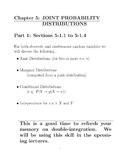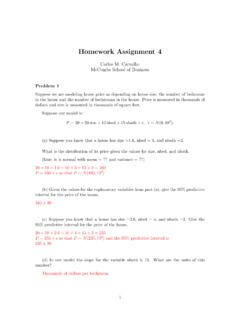Transcription of For high-density client environments in higher ... - Cisco
1 Wireless LAN Design GuideFor high - density client environments in higher education 2017 Cisco and/or its affiliates. All rights reserved. This document is Cisco Public Information. Page 1 of 41 4 About the Guide 4 Related Documentation 4 Executive Summary 5 Introduction 5 Target Environmental Characteristics for WLANs in higher Education Environments7 Planning 8 Design Point #1: Establish and Validate a Per-Connection Bandwidth Requirement 8 Design Point #2: Calculate the Aggregate Throughput Required for the Coverage Area9 and Scalability: How Much Bandwidth Will a Cell Provide?
2 10 Are Data Rates Dependable? 13 What Is Co-Channel Interference and Why Is It Important in high - density WLANs? 15 Design Point #3: Choose a high Minimum Data Rate to Support Increased Efficiency, Lower Duty Cycle, and Reduce the Effective Size of the Resulting Cell16 GHz Channel Reuse in high - density Wireless Design 17 5 GHz Channel Reuse in a high - density Design 17 Dynamic Frequency Selection and high - density Design18 - 20 MHz or 40 MHz Channels? .18 Evaluating Requirements for GHz and 5 GHz Connection Support 18 Design Point #4: 5 GHz Support Will Be Critical for high - density , So Determine the Channel Plan That You Will Support and How It Will Be Administered 18 Determine the Number of Channels and Cells Needed 20 Non Wi-Fi Interference and the high - density Network 20 21 21 22 22 23 24 26 27 27 29 29 30 Design Point #5.
3 Account for and Manage All Energy Within the Operating Spectrum to Ensure All of It Is Available for Use Access Point Placement and Coverage StrategiesOmnidirectional Antennas Versus Directional Antennas for high - density Coverage Omnidirectional Antennas Cisco Indoor Access Points with Internal AntennasDirectional Antennas Channel Reuse and Directional AntennasUse of Directional Antennas and DowntiltAP Placement OptionsOverheadSide Mounting Front and Rear Mounting Shadows Table of Contents higher Education 3 2017 Cisco and/or its affiliates.
4 All rights reserved. This document is Cisco Public Information. Page 2 of 41 30 Under Floor Mounting31 Bringing It All Together34 Cisco Unified Wireless Network Best Practices34 Pre-Deployment Site Inspection and Validation34 WLAN Design Calibration 35 Infrastructure Readiness 35 SSID Assignment 36 Wireless LAN Controller and Feature Specific Configuration Recommendations 37 Transmit Power Control Algorithm (TPC) 37 Dynamic Channel Assignment (DCA) Algorithm37 Coverage Hole Detection Algorithm 38 General - Profile Threshold for Traps 38 Conclusion38 Appendix A.
5 5 GHz Channels Available Worldwide by Regulatory Domain 30 Under Seat Mounting 2017 Cisco and/or its affiliates. All rights reserved. This document is Cisco Public Information. Page 3 of 41 higher Education TodayThe world is changing quickly and the education landscape is shifting under our feet. Advancements in pedagogy, evaluation, and student engagement are improving education daily. But challenges old and new threaten progress and jeopardize student success. That s why Cisco is committed to forward-thinking solutions that lay the framework for connected campuses, empowered educators, informed administrators, and students who have the tools they need for success in a new digital the world of education continues to change, educators and students alike must adapt to evolving expectations and benchmarks.
6 Student success looks quite different today than it has in the past even as recently as a few years don t necessarily need specific knowledge or a checklist of skills. What they need first and foremost is the ability to learn flexibly, adaptably, and continuously. They need to become actively engaged in learning so they can develop the skills necessary to adapt and evolve on an ongoing demands of the future and even of the present are redefining success for students today. As the picture of success changes, so too do the types of learning opportunities we need to create for our learning opportunities become more advanced, students achieve increasingly greater levels of success.
7 First, they become connected with peers, experts, teachers, resources, and information. They have access. Once they re connected, they are taught to use these resources effectively to become active learners. They increase their engagement. Beyond active learning, students encounter opportunities for transformative development that transcends traditional curricula. They are involved in a holistic experience. And, finally, the love of learning motivates them to take the initiative to create, collaborate, invent, and give back.
8 They spur most foundational and elemental stage in the journey toward advancing student opportunity is providing access to resources and instruction. Equitably. For today s hyperconnected world, delivering educational access overwhelmingly means providing access to the internet. At school and at home. In the classroom and out. Students need access anytime, anywhere, and on any starts with a strong network foundation. A simple, intelligent, automated, and secure network architecture is crucial for handling increased traffic, supporting a range of users, scaling to continuously offer new services, monitoring internet and application usage and protecting sensitive data from atop a solid and secure network foundation can we support the wireless connectivity and mobility services that extend access to all students at all times.
9 On campus, on the bus, at home, or anywhere else, Cisco solutions empower students and provide safe and secure learning environments . Only by starting here can we drive the evolution of student opportunity. 2017 Cisco and/or its affiliates. All rights reserved. This document is Cisco Public Information. Page 4 of 41 This design guide provides engineering guidelines and practical techniques for designing, planning, and implementing a wireless LAN (WLAN) within a high - density environment in a university or college campus.
10 high - density is defined as any environment with a large concentration of users, such as a classroom, lecture hall, or auditorium where the users are connected wirelessly, sharing applications and using other network services individually. This document is intended for wireless network design engineers responsible for designing, deploying, and maintaining today s Wi-Fi networks. Knowledge of Cisco networking concepts, WLAN technology fundamentals, Cisco Unified Wireless Network (CUWN) features and configurations are prerequisites.


















